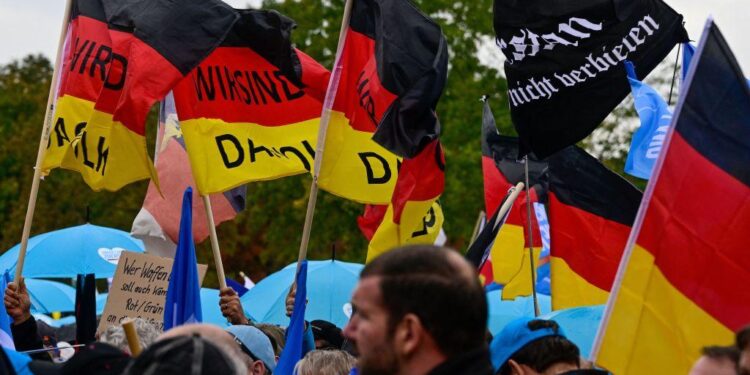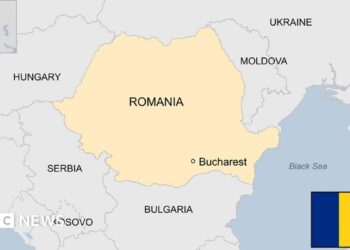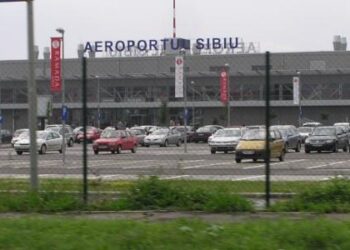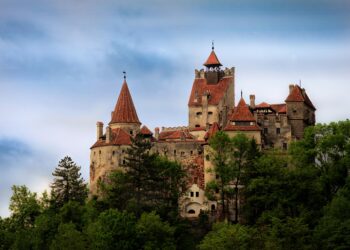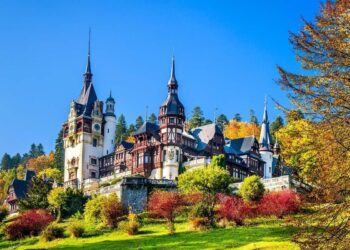A far-right political party in Romania is increasingly influencing the cultural and social identity of what some are calling the “new” old Romanian man, reshaping traditional ideals with a nationalist agenda. According to recent research presented by the European Consortium for Political Research (ECPR), this movement is not only redefining masculinity within Romanian society but also impacting broader political and social dynamics across the country. As debates intensify over national identity, gender roles, and political loyalty, the party’s rise offers a revealing case study in how far-right ideologies are reclaiming and repurposing cultural symbols to consolidate support.
The Rise of Far-Right Ideals and Their Impact on Romanian Masculinity
In recent years, the surge of far-right political movements in Romania has reinvigorated a particular vision of masculinity, steeped in tradition and nationalistic fervor. These parties promote an idealized version of the Romanian man-rooted in patriarchal values, physical strength, and militant patriotism. This reimagining pushes back against modern, globalized influences while appealing strongly to rural communities and conservative voters. The emphasis on “manliness” is not just cultural but political, with far-right leaders often portraying themselves as defenders of Romanian identity and family values against perceived liberal threats.
As this ideology gains ground, it reshapes public discourse on gender roles and societal expectations, influencing everything from education to media representation. Effects are visible in:
- Media portrayals increasingly valorizing traditional masculinity and patriarchal authority.
- Policy rhetoric that frames social progress as a threat to national strength and male dignity.
- Community programs emphasizing physical fitness, military readiness, and family lineage preservation.
| Aspect | Far-Right Narrative | Social Impact |
|---|---|---|
| Education | Promotion of nationalist history lessons | Reinforcement of traditional gender roles |
| Family Policy | Support for large, patriarchal families | Marginalization of alternative family structures |
| Media | Heroization of strong male figures | Stigmatization of modern masculinity expressions |
Examining Cultural Revivalism and Political Messaging in Shaping Identity
Cultural revivalism has become a strategic tool for the far-right party to rekindle a sense of national pride deeply rooted in Romania’s history. By reviving traditional symbols, folklore, and prominently celebrating historic figures, the party constructs a nostalgic yet selective portrayal of Romanian identity. This version of “authenticity” is designed to resonate with an audience yearning for stability amid rapid modernization and globalization, offering a comforting narrative that reasserts control over national destiny.
The political messaging cleverly intertwines with these cultural cues to reinforce a conservative vision of masculinity and nationalism. Campaigns emphasize:
- Family values as the backbone of society
- Patriarchal strength and resilience
- Defensive patriotism against perceived external threats
These themes together craft the image of the “new” old Romanian man-rooted in tradition, yet mobilized for contemporary political battles.
| Cultural Element | Political Messaging |
|---|---|
| Traditional Folk Songs | Call to national unity |
| Historical Heroes | Model of masculine virtue |
| Rural Agricultural Imagery | Symbol of rootedness and strength |
| Cultural Element | Political Messaging |
|---|---|
| Traditional Folk Songs | Call to national unity |
| Historical Heroes | Model of masculine virtue |
| Rural Agricultural Imagery | Symbol of rootedness and strength |
Strategies for Countering Extremism and Promoting Inclusive National Narratives
Addressing the rise of extremist ideologies requires a multifaceted approach that not only disrupts radicalization pathways but also reconstructs the national story to embrace diversity. Essential to this is fostering dialogue platforms where marginalized communities have a voice, thus diluting the exclusionary narratives often propagated by far-right factions. Educational reforms that embed critical thinking and media literacy into curricula empower young citizens to discern misinformation and resist ideological manipulation. Additionally, collaboration between civil society, government bodies, and tech companies ensures that extremist content is actively monitored and countered without infringing on democratic freedoms.
Promoting inclusive narratives involves celebrating the multicultural fabric of the nation while confronting the mythologized versions of identity that fuel division. Strategies include:
- Community-based storytelling projects that highlight shared histories and contemporary inter-ethnic cooperation.
- Public campaigns emphasizing pluralism as a source of national strength rather than weakness.
- Support for local leaders and influencers who advocate for unity and reject hate-driven rhetoric.
| Strategy | Key Benefit |
|---|---|
| Education Reform | Informed, resilient youth |
| Inclusive Storytelling | Community cohesion |
| Monitoring Digital Platforms | Reduced online radicalization |
| Public Awareness Campaigns | Challenging stereotypes |
Insights and Conclusions
As Romania grapples with its evolving political identity, the rising influence of far-right parties is reshaping traditional notions of masculinity and national belonging. This transformation reflects broader regional and global trends, highlighting the complex interplay between politics, culture, and social values. Understanding how these forces converge to mold the “new” old Romanian man is crucial for comprehending the country’s future trajectory within Europe’s political landscape. The coming years will reveal whether this redefinition fosters inclusion or deepens divisions in Romanian society.


